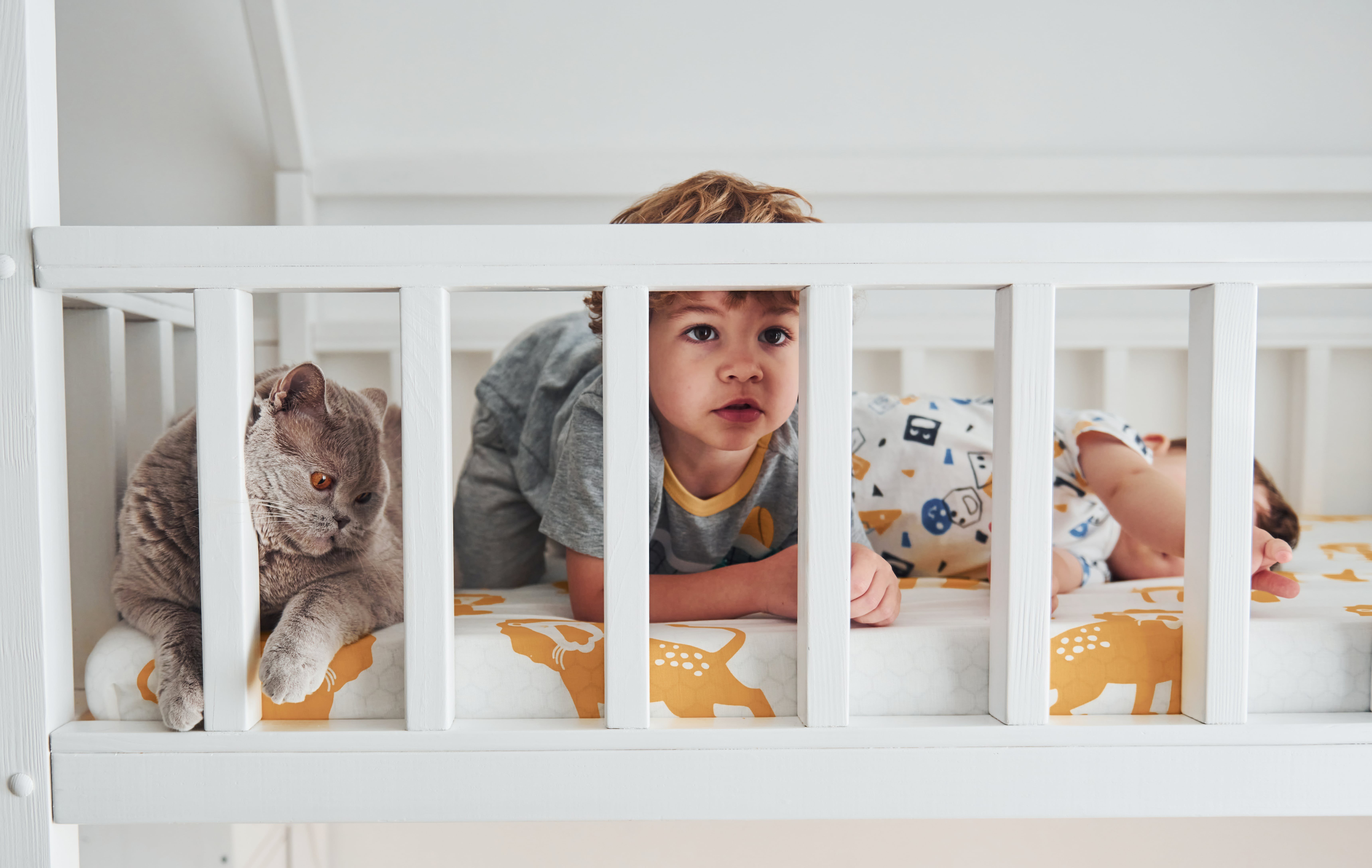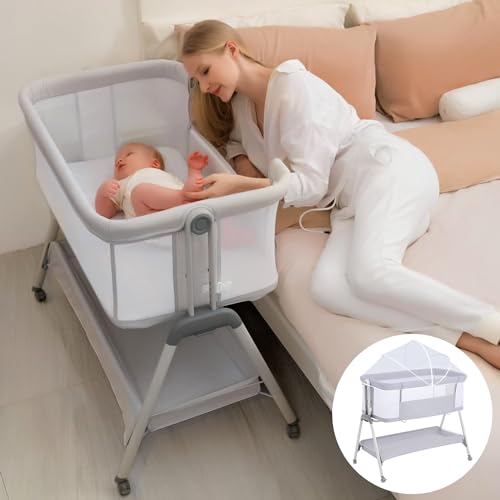Five Killer Quora Answers To Bedside Crib
댓글 :
0
조회 :
8
02.05 07:16
 Buying a Bedside Crib For Travel
Buying a Bedside Crib For TravelMoms love this crib's dimensions it's larger than the size of a Moses basket but smaller than a cot bed. It folds down to a third of its original size and fits into a convenient travel bag, making it perfect for travel.
 Keep in mind that the crib is intended for sleeping. Toys such as pillows, blankets and pillows can suffocate a child.
Keep in mind that the crib is intended for sleeping. Toys such as pillows, blankets and pillows can suffocate a child.Safety
When you are looking for a travel crib you'll want to be sure that the manufacturer is compliant with all safety standards. A good place to start is the Consumer Product Safety Commission (CPSC) website, which will inform you whether or not a specific crib is being recall. You'll also want to choose the correct size for your baby's bed to ensure it doesn't slide into gaps in the crib sides or create a suffocation hazard.
When you are choosing the right bassinet or crib make sure it conforms to the latest safety standards that were updated in 2022. You should also avoid older cribs or cribs that have been modified, or drop side cribs that have been repurposed for travel because these aren't tested and could pose a risk to your baby's well-being.
A travel crib needs to be built well and strong. Check for missing, loose or broken screws as well as other hardware. If you're using a playard it should have a secure wall and mesh windows to ensure proper air circulation. The slats on the crib should not be more than 2 and 3/8 inches apart, to keep baby's head and limbs from being trapped. Also, never put pillows, blankets or toys with stuffed animals in the crib. These can cause suffocation or strangle your baby and should be removed from the crib as soon as your child is able to push up on their hands and knees or prior to five months of age, whichever comes first.
It's also important to look regularly for broken or loose hardware and screws, particularly when you travel with your infant. Make sure you take out all plastic from the crib prior to use, too.
If you're using a portable crib, make sure it's not right under windows. A window could be an accident hazard for your baby could get hurt when they fall into it. It is recommended to keep your baby's sleeping space away from windows, even when they are old enough to roll over. It's crucial to wake your baby if they begin to roll over while sleeping.
Portability
Portable cribs (or playards, as they're sometimes called) are a great choice for anyone who is on vacation, has a family members over, or simply needing a safe crib for use during a sleepover or with friends. These portable cribs are simple to build and are compact when closed, and feature the most comfortable padded mattress that can support newborns up to 15kg.
MFM home testers appreciate the BabyBjorn travel crib because it's simple to fold and to store. Its simple drop-down panels that are one-handed are also convenient for parents who are bleary-eyed. It's not our tiniest pack-and-play play, but with just under 15 pounds, it's an adequate weight. It also has regular handles instead of a backpack style strap, which some parents prefer.
Another great option is the Joie Kubbie Sleep, which combines a bedside crib and bassinet in one compact unit that's ideal for both overnight and holiday visits to relatives and friends. It's not the cheapest alternative but it does come with a variety of features, including an organizer basket, soothing night lights that change colour, lullabies, and white noise, to help your child fall asleep.
The fabric is machine washable and washable, making it easy to clean. It's also quite light at less than 12kg, and fits neatly into the small, handy travel case that comes with it. It has six different height settings and a tummy-tilt for reflux/colic baby. It's able to fit all bed sizes. It's also easy to install. Our MFM tester could do it in only 10 minutes. It will require a mattress that is separate.
Feeding
Whether traveling for business or pleasure, it's important to ensure your baby is comfortable and safe on the road. It is better to buy a bassinet or crib designed for travel than to use one that you already have. These are smaller and have mesh sides so parents can observe their baby without disturbing them. They're also light and can be easily transported between places. These also comply with the safety standards set by the American Academy of Pediatrics and have not been recalled.
If you must use a bedside crib, it's recommended that your child be placed on their back and that the bed be free of blankets, pillows, and stuffed animals. This kind of sleeping arrangement increases the risk of SIDS. If you have to occasionally co-sleep, make sure that your baby is asleep and that you and your partner are dressed and awake.
There are many types of cribs for babies and newborns.
Some are designed like an oversized crib or Moses basket, whereas others have sides that can be lowered down into the bed of the parent. This allows parents to reach their child during the middle of the night to comfort and feed them, while avoiding the dangers of co-sleeping. The AAP warns against this because of the risk of being suffocated. Examples include the Arm's Reach Clear-Vue Bassinet, which is a bedside sleeper that connects to the parent's mattress. It can also be a safer option for older babies because the sides can be easily raised to let you reach the baby from the adult bed without lifting the mattress out. Another option is the travel cot that has a built-in bassinet that can be removed from the top of the crib making it easier to raise an infant who is sleeping for feeding or other care.
Sleeping
bedside travel crib cribs are an excellent method to sleep in a safe environment with your baby bedside crib. They are placed next to your bed, allowing you to easily reach them for night feedings and check on their sleep without disrupting them. Some cribs have a drop-side that you can lower for this purpose, while others have a height adjustment to ensure they can fit into your bed at home and when you go away.
While it used to be recommended that babies sleep in their own separate bedroom, there is a growing preference for parents to co-sleep with their infants. This arrangement, also known as rooming in, allows infants to remain close to their parents, while being separated from their own crib or a bassinet. There are a variety of co-sleepers available like the iCrib, which is designed to be portable and can be placed on the top of your bed, or bedside crib a standard crib. This model comes with a lightweight frame, a mattress that can be removed and is foldable bedside crib into a compact size for storage. The Joie Roomie Go crib is another option. It attaches to the bed's edge and comes with seven height positions, as well as a tummy tilt to help with colic and reflux. This crib was praised by our MFM home testers for its user-friendly design and compact folding, and it comes in a variety of colors.
There are also freestanding large bedside cot cribs, like our Lilly and Alain, that can be positioned on top of a traditional bed frame. The cribs feature the side barrier that can slide down to allow you to grab your baby for feedings at night. However they are also self-contained, allowing your baby to continue sleeping peacefully. They also meet the new BS EN 1130:2019 safety requirements which require that a 120mm high barrier must be present between your mattress and your child's cot.
There are also cribs for travel available. They are specifically designed to be carried when traveling. They are usually smaller and less bulky than standard cribs, making them more convenient to take into and out of cars and hotels. The Munchkin Brica travel crib, for example can be set up and packed down in under a minute and it weighs only three pounds, so it is easy to move and carry.


